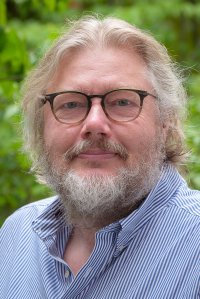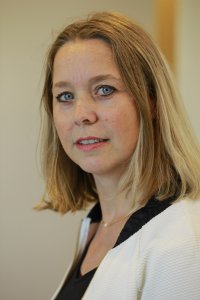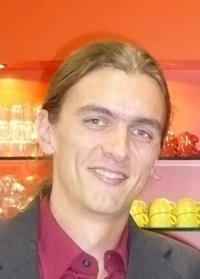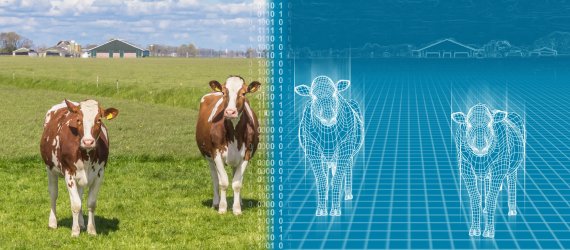‘Houston, we have a problem.’ With sweat drops on his forehead, astronaut Ken Mattingly, played by Gary Sinisi, is trying to find the right starting sequence. It’s a nerve-wracking scene in the film Apollo 13. A couple of oxygen tanks exploded soon after the spaceship was launched in 1970. The replica of Apollo 13 that NASA had built played an important role in the rescue mission because the engineers were able to test all the possible solutions from the ground without any danger of harming the astronauts on board.
The replica of Apollo 13 is an example of a digital twin. Such replicas are popping up all over the place these days, and WUR is going to work with them too. But what exactly is a digital twin? ‘It is a virtual replica of an individual object or system in the real world,’ says Dick de Ridder, professor of Bio-informatics. ‘It makes use of various technologies such as 3D simulations, big data analysis, sensors and artificial intelligence.’ The digital twin forms a bridge between the physical and the digital worlds.
De Ridder coordinates the investment theme Digital Twins, in which WUR is investing nearly four million euros for three projects (see insets). ‘We have selected projects that could have a big scientific and social impact,’ says Willem Jan Knibbe, co-coordinator and head of the Wageningen Data Competence Center (WDCC), which researches whether there is a place for Digital Twins in the university’s data-driven research.
Living organisms
Up to now, digital twins have mainly been used in industries such as transport and construction. Manufacturers can first test complex objects such as aeroplane engines, cars, trains, oil rigs and wind turbines digitally before producing them. Steps are already being taken towards simulations of buildings, factories and even cities: researchers are currently working on a digital twin of the British city of Newcastle, for instance, with the aim of helping the city to respond promptly and adequately to flooding.
A car is one thing, but a living organism or ecosystem is something else again. ‘Because such an unbelievably large number of factors play a role, it is a lot more complicated to make a digital twin of living things,’ says Knibbe. ‘But thanks to the new sensor technologies, the internet of things, and the possibility of storing and analysing large quantities of data, it is coming a bit closer.’
We’ll be able to test a tomato variety that doesn’t even exist yet
Self-learning
This is still largely unexplored territory for WUR, says Knibbe. ‘When scientists want to predict what will happen, they usually use models to do so. The fact is that many systems, such as the climate, are incredibly complex. So a model is never more than an approximation of the reality, and therefore factually incorrect.’
One way of improving on that is to tweak the model after a trial run, to make it more accurate. But what if the model could correct itself? De Ridder: ‘Imagine you have a field and you want to know the soil temperature there. You can use a model for the average field, based perhaps on the ambient temperature. But a model only shows you what might happen, not what actually happens. You can also put sensors in a specific field that measure the actual temperature.’
And that pinpoints an important difference between an ‘ordinary’ model simulation and a digital twin. The latter is continuously fed with real-time data so that the model grows with the reality and shows what is happening at that moment. And the digital twin is based on data from that particular field, rather than a collection of data from different fields. Knibbe sees a lot more potential. ‘The best thing would be to make a digital twin that is self-learning. It can then do things like compare the latest sensor information with the predictions of the model. If the soil is warmer than the model predicts, the model can correct itself. Then it is no longer people but computers themselves that make the algorithms for the model.’
That is food for thought. ‘We need to ask ourselves how far we want to go. Do we want digital twins to make their own decision, for example? We are already seeing a trend for farmers to spend more time at their computers than in their barns. Will they soon be totally redundant? Or will the technology only take over certain tasks, so that the work can be organized differently?’ Within the project there is an “inclusiveness” group that ponders this social impact and ethical implications.’
Useful technology
Besides the ethical considerations, there are also still some technical hurdles to be cleared. ‘To make a digital twin as good as possible, data and models that are unconnected at the moment will be combined,’ says Knibbe. ‘If that works, a digital twin of this kind can provide more, and more far-reaching, insights than the individual model simulations.’ But it’s not so easy to combine these models, he thinks. ‘Just like a chain, a digital twin is as strong as its weakest link. So if something is missing, or the data set is imprecise, that has a big impact on its reliability. So we’ve got people from several disciplines working together, which is also strengthening the sense of community.’
De Ridder agrees. ‘It is a marvellous concept with a lot of potential. The challenge is to collect enough high-quality data to be able to create something useful. It has got to be more than a technical novelty. There are plans for building a digital twin, but part of the next three years will be spent on finding out what its added value is in our scientific field.’
On the digital farm we can carry out trials that would otherwise take years

Agrosystems Research researcher Thomas Been.
The digital farmer
Agrosystems Research researcher Thomas Been and his team of economists and animal, soil, environmental and data scientists are building the digital farm of the future. They base the digital farm on real-time information from a real farm. Been: ‘Think: drones flying over the fields, satellite data, and sensors in the soil.’
The researchers’ goal is to develop a dashboard that provides a digital replica of the farm so that you can see what is going on at a glance. Been thinks this will be of interest to both crop and livestock farmers. ‘A farmer can see at once whether more fertilizer is needed, for instance, of whether it is time to move the cows to a different field.’ It is of interest to researchers too. ‘With this we can calculate scenarios and carry out trials that would normally take years. To see, for example, what happens to the protein content of grass if it gets less nitrogen, and what that means for the quality of the cows’ feed. These things are not easy to test in the field.’ Because of its current relevance, and the social and political debate going on about it, the researchers are starting by focussing on the nitrogen cycle.

Lydia Afman, a researcher at Human Nutrition.
Personal dietary advice
Lydia Afman, a researcher at Human Nutrition, is working with her team of biologists, toxicologist, economists and consumer science researchers on an app for personal dietary advice. The app takes into account things like blood sugar, blood fat levels after a meal, and factors such as behaviour and personal preferences, including vegetarianism and religious convictions.
At the first stage, the researchers predict how different people respond to fat in a meal. ‘Whether you are a man or a woman, your age, or whether you have just had some exercise: all of this has an influence,’ says Afman. The researchers already have data from nearly 500 people with overweight.
They want to use this data to build an app that will give personalized advice and help people make healthy decisions about what to eat. Afman: ‘Because it takes personal preferences into account, people are more likely to actually follow the recommendations. Ultimately we want to work towards an app based on a digital twin of the user.’ With these individual data, the app can predict things like how high the person’s blood fat levels will go after a meal, and can adjust its dietary advice accordingly.’

Researcher Jochem Evers of the Plant Sciences Group.
The 3D tomato
Researcher Jochem Evers of the Plant Sciences Group and his team of social scientists, economists and environmental scientists are collaborating on a virtual tomato greenhouse. ‘Unlike conventional crop models, this digital twin model is continuously updated with what is going on in the greenhouse at that moment,’ says Evers. ‘The model becomes more and more accurate as a result.’
With these data, the researchers can create a 3D model of the greenhouse and the plants, and can make predictions about the tomato greenhouse in the real world. Evers: We can predict growth, for instance, and based on that, we can adjust the automatic lighting, humidity and temperature so that growth is optimal.’
To some extent, this is possible with existing simulation models. But Evers thinks bigger. ‘What would be really exciting would be if we could use the digital twin to calculate certain scenarios for which we can’t easily run an experiment. For example, to see what happens if you use a different kind of glass in the greenhouse, or a new tomato variety, perhaps one that doesn’t even exist yet.’
Your virtual you
Imagine that your doctor had a digital copy of you on the computer and could test treatments on it. Sounds futuristic, but this scenario is not all that far off. There are already virtual hearts beating on PCs, and realistic computer models of other organs too. Universities, hospitals and companies around the world, including the Netherlands, are working within the European research consortium CompBioMed on the project Virtual Humans, to make the first digital human.

 Photo: Paul Gerlach, Shutterstock
Photo: Paul Gerlach, Shutterstock